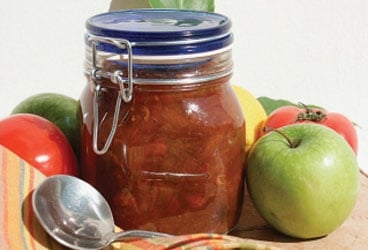
SugarSpice
As my husband, Alvah, and I navigated Roger Henry, our 36-foot steel cutter, through the twisting, uncharted shoals protecting the entrance to the Río Chone, on Ecuador’s northern coast, his jaw became rigid, and his brow furrowed. I knew that look. We were in trouble.
“Look at that greasy swell up ahead,” he said. “I’m sure that’s an unmarked rock or shoal.”
Just ahead, a trawler motoring toward the river mouth came to a grinding halt in a swirl of brown mud. We estimated that its draft was about equal to ours. Suddenly, our depth sounder flashed six feet; Roger Henry slowed as its keel plowed the muddy bottom. The trawler crew gestured wildly that we should pass south of them. Cautiously, we did.
Against all instincts, Alvah steered the boat directly toward the rock-strewn beach. Then he jammed the helm down, turned hard to port, and followed the deepening channel around the point into the Río Chone. There, nestled along the river’s edge, the town of Bahía de Caráquez basked in soft, golden sunlight.
The excitement of a new landfall soon blurred the last few harrowing hours. As soon as the bureaucratic formalities were taken care of, I followed my nose to the nearest market. Beside piles of mangoes, peppers, limes, and chilies, I noticed a basketful of red, oval tree tomatoes, a fruit I hadn’t seen since my childhood in New Zealand. Noticing my interest, a beaming Indian woman said, “Bueno jugo! Bueno jugo!”-Good juice! Good juice!
Tree tomatoes, also known as tamarillos, are native to Peru and Ecuador, where they’re mostly made into juice. In New Zealand, this tartly sweet fruit is eaten fresh or made into sauces and chutneys. What luck! Here before me lay all the ingredients for delicious chutney.
We’ve sailed for years without refrigeration, and I often make chutneys to add zing to an otherwise limited cuisine. They keeps well, and like a good red wine, the flavor improves with age. Chutneys are simple to prepare, but attention must be paid to the correct amounts of sugar and vinegar, the two main preservatives. Because the combination of other ingredients isn’t critical, recipes can be altered per ingredient availability or to create personal favorites. I usually make a chutney base. After cooking it for an hour, I divide it into thirds and create three distinctive styles: my favorite, double garlic and ginger; Alvah’s paint-stripping hot-chili chutney; and, for variety, a spicy lime.
I loaded my bags to bursting with succulent, fresh produce. In broken Spanish I explained my mission to the Indian lady and promised to bring her a jar of chutney. Shyly, she nodded and slipped a handful of bright-red chilies into my bag. “Muy picante, como fuego!” she cautioned, smiling: Very hot, like fire! I grinned and thought: Now those will really strip Alvah’s paint!
Spicy Tomato Chutney
10 medium red or green tomatoes, diced, or 12 tamarillos, skinned and diced
4 to 5 medium onions, chopped
4 tart apples, cored, peeled, and diced *
2 cups brown sugar
1 cup malt vinegar*
1 cup dates, chopped
1 cup raisins
2 to 3 cloves garlic, pressed
1 inch fresh gingerroot, peeled and grated
1/2 teaspoon each cinnamon, coriander, ground cloves, nutmeg, and ginger
1 1/2 teaspoons salt
* Substitutions and variations: For apples, substitute green or red peppers. Instead of malt vinegar, use white or cider vinegar. For flavor variation, add lemon zest or sliced limes, curry powder, or hot chilies, all to taste.
Combine ingredients in a large pot. Bring to a boil. Reduce heat to low and simmer, stirring frequently, until reduced and thickened, about 2 hours. Remove from heat and spoon into hot, sterilized jars, seal, and store in a cool, dry place. Yield: about 4 pints. Serve with curries and stir-fries, to accompany cheese and crackers, meat, poultry, or fish, on sandwiches, or to baste barbecuing meat.







